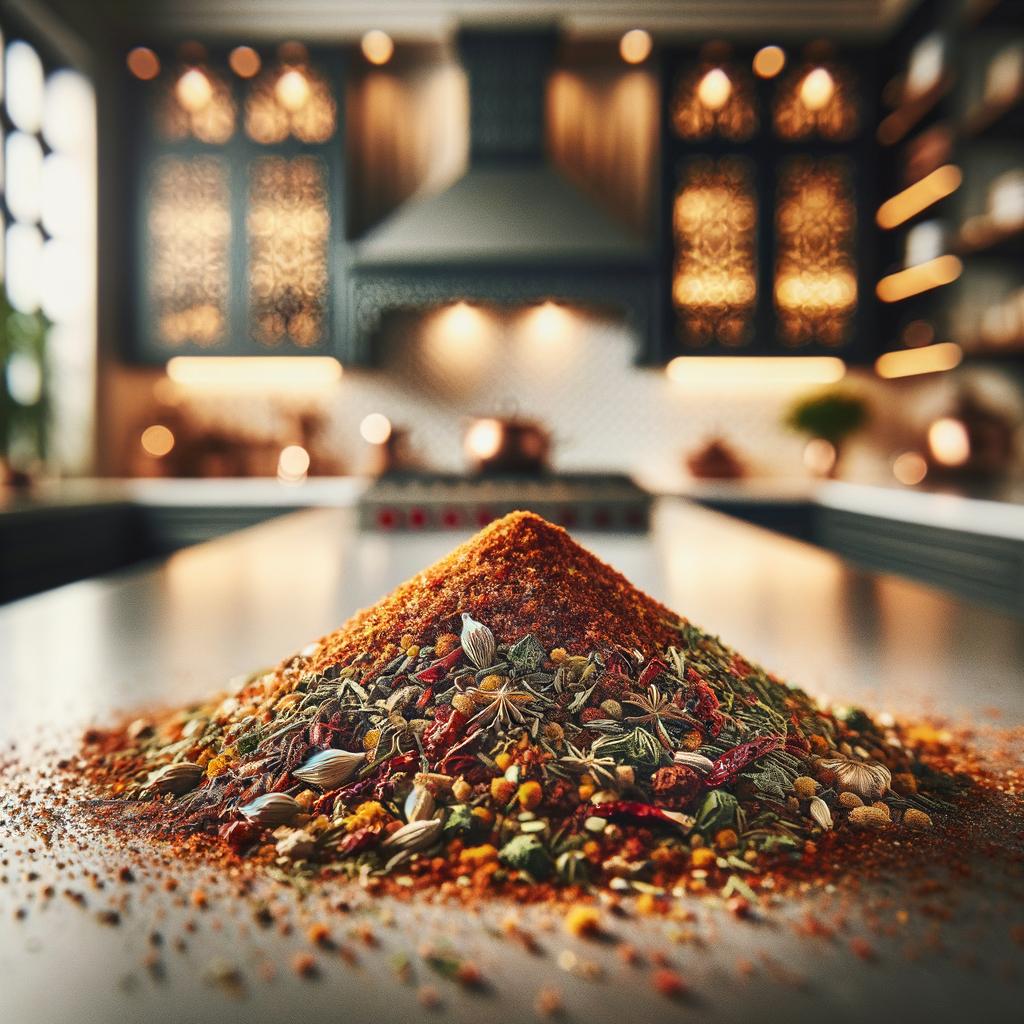Moroccan Spice Blend

Description
The Moroccan spice blend, often referred to as Ras el Hanout, is a symphony of flavors that is as diverse and vibrant as the country it originates from. Its appearance is a captivating blend of colors, ranging from the deep red of paprika to the golden hues of turmeric and the earthy tones of cumin. The texture of this blend is finely ground, yet it carries a complexity that is both rough and smooth, mirroring the diverse landscapes of Morocco. The flavor profile is a tantalizing dance between sweet and savory, with a hint of heat that lingers on the palate. Each spice in the blend brings its unique character, yet they harmonize beautifully, creating a melody of flavors that is distinctively Moroccan.
Primary Uses
Ras el Hanout is the heart of Moroccan cuisine, lending its warming and aromatic flavors to a variety of dishes. It is a key component in traditional Moroccan tagines, couscous, grilled meats, and stews. It also finds its way into sweet dishes, subtly enhancing the flavors of pastries and fruit desserts. Beyond the culinary sphere, Ras el Hanout is often used in traditional Moroccan medicine for its anti-inflammatory properties and is considered a symbol of hospitality and generosity in Moroccan culture.
History
The history of Ras el Hanout is as rich and exotic as the spice blend itself. The name translates to "head of the shop", indicating that it was traditionally made from the best spices a merchant had to offer. Each spice merchant in Morocco would have their unique blend, often a closely guarded secret passed down through generations. While the blend's use has evolved over time, it remains a cornerstone of Moroccan cuisine and culture. There's a romantic notion that the blend was used as a love potion in ancient times, further adding to the mystique and allure of this enchanting spice blend.
Nutritional Information
Ras el Hanout is a treasure trove of nutrients, owing to the wide array of spices that make up the blend. It is rich in antioxidants and anti-inflammatory compounds, thanks to the presence of spices like turmeric and cinnamon. It is also a good source of minerals like iron, magnesium, and calcium. The capsaicin in the hot spices can boost metabolism, while the fiber in the blend aids digestion. Compared to other spice blends, Ras el Hanout offers a broader spectrum of nutrients due to its diverse ingredients. However, as with all spices, it should be consumed in moderation as part of a balanced diet. The magic of Ras el Hanout lies not just in its flavors, but also in the stories it carries and the health benefits it offers.

